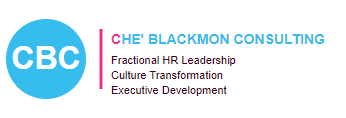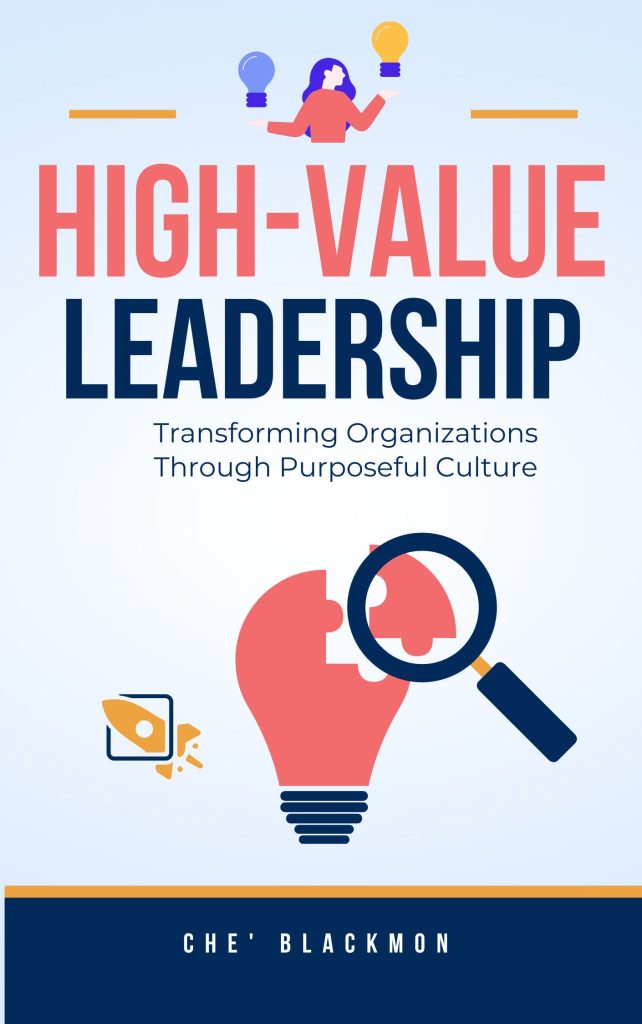Your cart is currently empty!
“The transition from doing the work to leading the work isn’t about giving up your expertise—it’s about multiplying your impact through others.”
🎯 The Leadership Paradox
Here’s something nobody tells you when you get that first leadership promotion: the very skills that got you promoted can become the biggest obstacle to your success.
You were promoted because you were excellent at your job. You delivered results. You solved problems. You were the go-to person when things got tough. But now? Now you need to help others become excellent. And that requires a completely different mindset.
For Black women in corporate spaces, this transition carries additional weight. You’ve likely worked twice as hard to prove yourself as an individual contributor. Your technical excellence has been your shield against bias and your proof of belonging. The thought of stepping back from hands-on work can feel like voluntarily removing your armor.
But here’s the truth: leadership excellence doesn’t mean abandoning your expertise—it means leveraging it differently.
💡 Understanding the Mindset Shift
From Doer to Enabler
Individual contributors succeed by completing tasks. Leaders succeed by creating environments where others can thrive.
Consider a company that promoted their top performer to team lead. She struggled initially, trying to do her old job while managing others. Her team felt micromanaged. She felt overwhelmed. Sound familiar?
The breakthrough came when she realized: Her job wasn’t to have all the answers anymore—it was to ask the right questions that helped her team find answers.
In “High-Value Leadership,” I emphasize that transformational leaders create conditions for excellence rather than demanding it through control.
Key Mindset Shifts:
Individual Contributor Thinking → Leadership Thinking
- “How do I solve this?” → “How do we build capacity to solve this?”
- “I need to be the expert” → “I need to develop experts”
- “My success = my output” → “My success = our collective impact”
- “I control the work” → “I create the conditions for great work”
🚀 The Four Dimensions of Leadership Mindset
1. Strategic Perspective 🎯
Individual contributors focus on execution. Leaders must zoom out to see patterns, anticipate challenges, and align work with broader organizational goals.
Practical Shift: Block two hours weekly for strategic thinking. No emails. No meetings. Just thinking about trends, risks, and opportunities your team should prepare for.
For Black women, this strategic thinking time is particularly crucial. Research shows that women of color are often kept in operational roles rather than strategic ones. You must intentionally create space for strategic leadership, even when organizational systems don’t naturally provide it.
2. Relationship Orientation 🤝
Technical work can often be done solo. Leadership work is inherently relational. Your influence flows through relationships, not just your position.
A manufacturing company saw this when they promoted a brilliant engineer to plant manager. Her technical skills were undeniable, but she struggled until she recognized that leadership is fundamentally about understanding what motivates people and creating connections that drive results.
Actionable Takeaway: Schedule regular one-on-ones with each team member. Use 70% of the time to listen and understand their perspectives, challenges, and aspirations. Only 30% should be you providing direction.
3. Systems Thinking ⚙️
Individual contributors optimize their piece of the puzzle. Leaders must see how all pieces interconnect and ensure the whole system functions effectively.
In “Mastering a High-Value Company Culture,” I discuss how culture is a system—change one element and everything shifts. Leaders who understand this create more sustainable change than those who focus on isolated fixes.
Example: A team was struggling with missed deadlines. The leader could have mandated longer work hours (individual fix). Instead, she examined the system: unclear priorities, inefficient handoffs between departments, and lack of buffer time for unexpected challenges. Addressing these systemic issues solved the problem without burnout.
4. Development Focus 🌱
Your goal shifts from personal mastery to building mastery in others. This means tolerating imperfection, coaching through mistakes, and celebrating others’ growth.
For many high-achievers, especially Black women who’ve had to prove themselves repeatedly, this is hard. You know you could do it faster and better yourself. But leadership isn’t about what you can do—it’s about what you can help others become.
🎭 Navigating the “Double Bind” as a Black Woman Leader
Let’s address what’s often unspoken: Black women face unique challenges in leadership transitions.
Research consistently shows that Black women encounter what’s called the “double bind”—damned if you do, damned if you don’t. Be assertive and you’re labeled “aggressive.” Be collaborative and you’re seen as “lacking executive presence.”
Strategies for This Reality:
Build Your “Kitchen Cabinet” 📞 Create a trusted circle of advisors who understand your experience. This includes other Black women leaders who can offer perspective on navigating bias while maintaining authentic leadership.
Document Everything 📝 Keep detailed records of your contributions, decisions, and team successes. When your leadership is questioned (and it may be), you’ll have evidence that speaks louder than bias.
Create Strategic Alliances 🤝 Identify sponsors—people with power who will advocate for you in rooms you’re not in. As discussed in “Rise & Thrive,” sponsors are different from mentors. They put their social capital on the line for your advancement.
Define Your Leadership Style ✨ Don’t try to lead like anyone else. Your unique perspective as a Black woman—your cultural competence, resilience, and ability to bridge differences—is a leadership superpower. Name it. Claim it. Use it.
🔄 Making the Transition: A 90-Day Roadmap
Days 1-30: Listen & Learn 👂
- Schedule one-on-ones with each team member
- Ask: “What’s working? What’s not? What do you need from me?”
- Observe team dynamics without immediately trying to fix everything
- Identify the formal and informal influencers on your team
For Black Women: Pay attention to how you’re being received. Are team members testing your authority? Are they more comfortable with your white male peers? Notice patterns without internalizing them as your failure.
Days 31-60: Define & Align 🎯
- Articulate your leadership vision and values
- Connect team goals to organizational priorities
- Establish clear expectations and ways of working
- Begin delegating responsibilities based on team members’ strengths
Critical Point: Your vision should leverage your unique perspective. If you’ve navigated bias to reach leadership, you likely have keen insights into how systems can exclude talent. Use that wisdom to create more inclusive team practices.
Days 61-90: Empower & Elevate 🚀
- Give stretch assignments to high-potential team members
- Provide coaching rather than answers when problems arise
- Celebrate team wins publicly
- Start identifying your successor (yes, already)
📊 Measuring Your Leadership Evolution
Track these indicators of successful mindset shift:
✅ You spend more time coaching than doing Aim for 60% of your time spent developing others, not executing work yourself.
✅ Your team takes calculated risks If your team only brings you safe ideas, they don’t feel psychologically safe. Great leaders create environments where thoughtful risk-taking is encouraged.
✅ Credit flows to your team You’re succeeding when your team’s accomplishments are recognized more than yours.
✅ You’re comfortable with “good enough” Perfectionism is an individual contributor trait. Leaders understand that 80% done by someone developing is often better than 100% done by you.
✅ Your team problem-solves without you The ultimate measure: your team handles challenges effectively even when you’re not there.

💪 The “Traditionally Overlooked” Advantage
Here’s what organizations miss when they overlook Black women and other marginalized groups for leadership: you’ve already developed crucial leadership skills just by navigating corporate spaces.
Consider what you’ve mastered:
- Reading unspoken rules = Strategic awareness
- Code-switching effectively = Cultural intelligence
- Staying composed under unfair scrutiny = Emotional regulation
- Building coalitions for survival = Stakeholder management
- Proving yourself repeatedly = Resilience and grit
These aren’t just coping mechanisms—they’re executive competencies. The mindset shift is recognizing these as leadership strengths, not just survival tools.
A technology company recently promoted a Black woman to VP after years of overlooking her. Within six months, employee engagement in her division increased 40%. Why? She created psychological safety for her diverse team because she knew firsthand what exclusion felt like. That’s not despite her experience—it’s because of it.
🎓 Expert Insights: What Research Tells Us
Recent studies on leadership transitions reveal:
The “Double Bind” Data 📊 Black women receive less actionable feedback than white counterparts and are 30% less likely to have sponsors advocating for their advancement (McKinsey, 2024).
The Performance Paradox 🎭 Research shows Black women must demonstrate higher competence levels before being considered for leadership, yet receive less support during transitions (Harvard Business Review, 2023).
The Innovation Advantage 💡 Teams led by Black women show higher innovation metrics because they’re more likely to include diverse voices and challenge groupthink (Deloitte, 2024).
The Bottom Line 💰 Companies with diverse leadership (including Black women in senior roles) outperform peers by 36% in profitability (McKinsey, 2024).
🛠️ Actionable Leadership Practices
Weekly Practices:
Monday: Set team priorities and communicate the “why” behind them
Wednesday: Hold skip-level meetings with team members two levels down
Friday: Reflect on decisions—what worked, what didn’t, what you learned
Monthly Practices:
- Review your calendar: Are you spending time on leadership work or old individual contributor tasks?
- Solicit feedback: Ask your team what you should start, stop, and continue doing
- Invest in your leadership: Read, attend workshops, connect with other leaders
Quarterly Practices:
- Assess team health: Are people growing? Are they engaged? Do they feel valued?
- Evaluate your network: Are you building strategic relationships that benefit your team?
- Measure impact: What tangible outcomes have you created through your leadership?
🎯 When You’re Ready to Delegate: A Framework
Many new leaders struggle with delegation. Use this decision tree:
Ask yourself:
- Can someone else do this 70% as well as me? → Delegate it
- Is this a development opportunity for someone? → Delegate it with coaching
- Must I personally do this due to authority/confidentiality? → Do it yourself
- Am I holding onto this because I enjoy it? → Probably should delegate it
Remember: Every task you hold onto is a development opportunity you’re stealing from your team.
🌟 Creating Your Leadership Identity
Your leadership identity should integrate:
- Your authentic self: The values, experiences, and perspectives that make you unique
- Your role requirements: What the organization needs from you
- Your team’s needs: What your people need to thrive
- Your growth edge: Where you’re deliberately developing
For Black women, this identity work is particularly important. You’re not trying to lead like anyone else. You’re creating a leadership approach that’s authentic to you while effective in your context.
As I emphasize in “Rise & Thrive”: Your unique perspective isn’t a deficit to overcome—it’s a strategic advantage to leverage.
🎬 Real Talk: Common Pitfalls
Pitfall #1: The Superhero Complex
Trying to do everything yourself because “it’s faster.”
Reality Check: You’re not building a sustainable team. You’re building dependency on you.
Pitfall #2: Friendship Over Feedback
Avoiding difficult conversations because you want to be liked.
Reality Check: Your job isn’t to be everyone’s friend. It’s to help them grow. That requires honest, compassionate feedback.
Pitfall #3: Clone Creation
Only developing people who think and work like you.
Reality Check: Diverse teams outperform homogeneous ones. Embrace different approaches.
Pitfall #4: The Imposter Trap
Believing you don’t deserve your leadership role.
Reality Check: You were chosen for reasons. If you’re a Black woman, you likely had to prove yourself more than others. Trust that you’ve earned this.
💬 Discussion Questions for Reflection
- What aspects of my individual contributor identity am I most afraid to let go of? Why?
- How might my experience as a Black woman shape my unique leadership approach?
- What does success look like for me as a leader in 90 days? One year? Three years?
- Who on my team is ready for development opportunities I’m currently holding onto?
- What support systems do I need to build to succeed in this transition?
- How will I measure whether I’m truly leading versus just managing?
🚀 Your Next Steps
Immediate Actions (This Week):
✅ Schedule your weekly strategic thinking time
✅ List three tasks you’re doing that someone else could do
✅ Set up one-on-ones with each team member if you haven’t already
Short-term Actions (This Month):
✅ Identify a mentor or coach who can support your transition
✅ Create your leadership vision statement
✅ Delegate one significant responsibility with proper coaching
Medium-term Actions (This Quarter):
✅ Build your strategic network of peers and sponsors
✅ Establish key performance indicators for your leadership
✅ Begin succession planning for your current skillset
🤝 Work with Che’ Blackmon Consulting
Making the leap from individual contributor to influential leader doesn’t have to be lonely or overwhelming. Whether you’re navigating your first leadership role or scaling your influence to the executive level, strategic support makes the difference between surviving and thriving.
We specialize in:
✨ Leadership Development Programs tailored for emerging and established leaders
✨ Executive Coaching for Black women leaders navigating corporate spaces
✨ Culture Transformation that unlocks overlooked talent
✨ Fractional HR Leadership for companies committed to developing inclusive leaders
Our approach combines proven frameworks with real-world experience helping leaders make successful transitions while maintaining authenticity and achieving measurable results.
Ready to Accelerate Your Leadership Journey?
📧 Email: admin@cheblackmon.com 📞 Call: 888.369.7243 🌐 Visit: cheblackmon.com
Book a complimentary 30-minute consultation to discuss your leadership goals and explore how we can support your transition from individual contributor to influential leader.
🌟 Final Thought
The mindset shift from individual contributor to leader isn’t about becoming someone else. It’s about expanding who you already are. Your technical excellence remains valuable—it’s now your foundation, not your ceiling.
For Black women making this transition, remember: every barrier you’ve overcome, every bias you’ve navigated, every time you’ve had to prove yourself has built leadership muscles. Those experiences aren’t baggage—they’re your unique preparation for creating more inclusive, effective, and transformational leadership.
You don’t have to lead like everyone else. You get to lead like you.
And that’s exactly what organizations need—leaders who bring new perspectives, challenge old assumptions, and create environments where all talent can thrive.
Your transition to influential leadership isn’t just about your career advancement. It’s about transforming what leadership looks like, who gets to lead, and how organizations define success.
That’s not just a job promotion—that’s a legacy.
Are you ready to make the shift? 🚀
Che’ Blackmon is a leadership development expert, fractional HR executive, and author of three books on building high-value cultures. With 25+ years of experience, she helps organizations unlock overlooked talent and develops leaders who create lasting transformation.
#HighValueLeadership #BlackWomenInLeadership #LeadershipDevelopment #ExecutivePresence #CultureTransformation #InclusiveLeadership #WomenInBusiness #CareerGrowth #BlackExcellence #LeadershipMindset #ProfessionalDevelopment #DiversityAndInclusion #WomenOfColor #CorporateLeadership #LeadershipTransition


